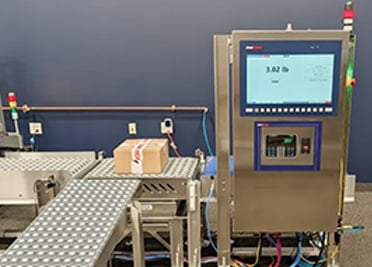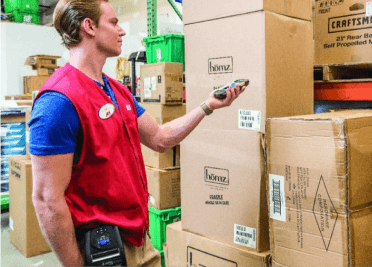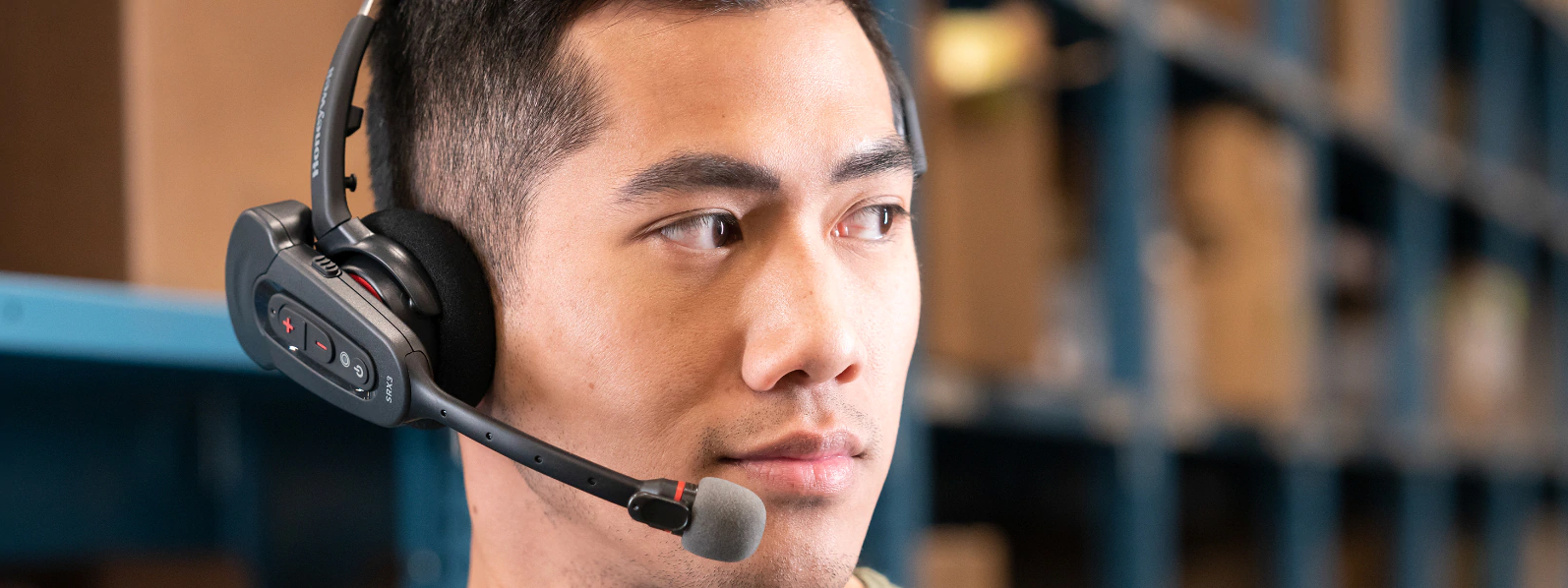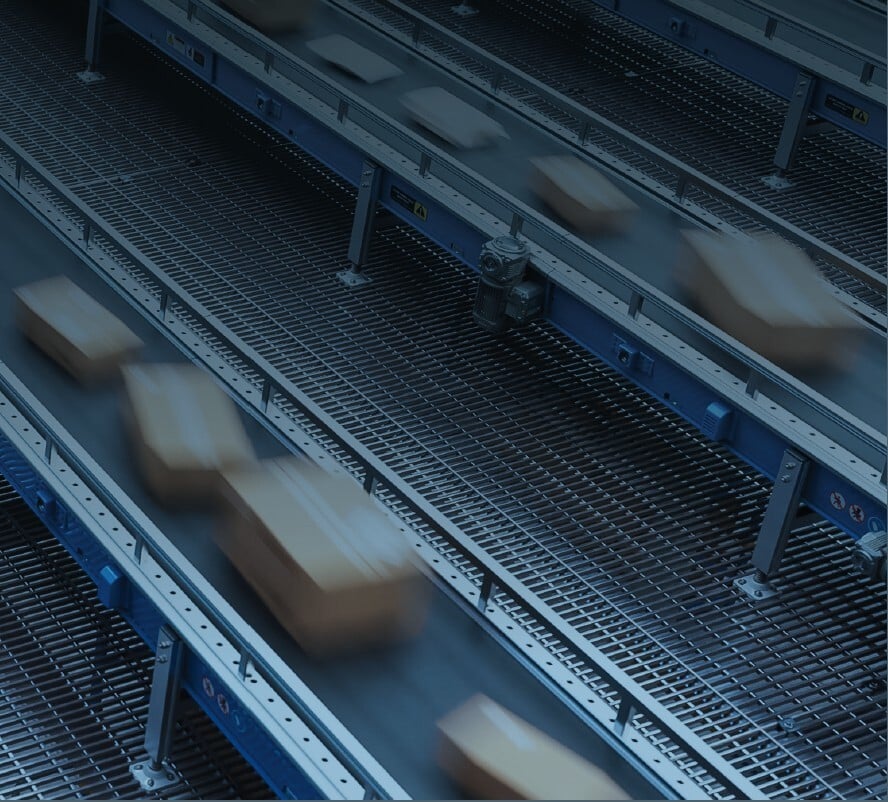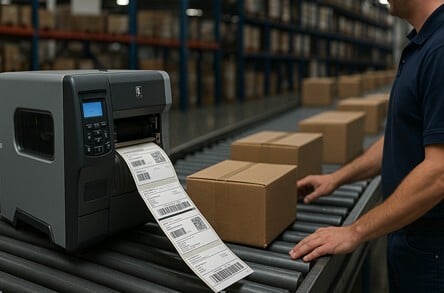As smart watches, fitness trackers, and other wearable technologies become more common in our daily lives, distribution center workers are beginning to expect the same seamless usability and performance from the technology that they use on the job.
Just as we no longer need to hold a device in our hand to receive a phone call, track steps, or monitor social media, distribution center employees are looking for ways to free up their hands to be more productive and efficient in their daily tasks.
Transitioning from Handhelds to Wearables
Today, many distribution centers are still using handheld scanners, paper-based picking methods, and mobile computers to move and track goods in very hands-on, repetitive workflows like each picking for ecommerce. Early iterations of handheld scanners had wires, which at the time were an improvement over manual data entry, but restricted motion and became a nuisance when the wires got in the way. Many applications have since moved to wireless handheld scanners, which eliminate that problem, but still don’t enable workers to work “hands-free”.
But hands-free and wearable technology is rapidly becoming the de-facto choice for modern distribution centers. From software that offers workers a voice-based connection to the warehouse management system (WMS), to wearable barcode scanners connected via wireless communication standards like Bluetooth®, technologies that help free up workers’ hands and connect them to data more fluidly are helping to move the industry toward the next era of efficiency in data capture and order fulfillment.
As the expectations of similar easy-to-use, consumer-like technology experiences in industrial settings grow among manufacturing and distribution center workers, many organizations want flexibility in their mobile computing options. Having a range of device options poses significant advantages for supply chain firms, which is why it’s now essential for wearable barcode scanners to be Bluetooth-enabled and compatible with a range of host computing devices, including smartphones, vehicle-mounted computers, or other devices.
Through Bluetooth connectivity, a wearable barcode scanner resembling a “ring” is not limited to one particular host device. It can be connected to a PC for stationary scanning tasks, or to a variety of mobile devices for tasks that require movement throughout the facility. At Honeywell, we expect to see this become an even more important capability as different types of connected devices continue to infiltrate the distribution center and interoperability becomes crucial to the process flow.
In addition to interoperability and seamless wireless connectivity, ergonomics is very important when it comes to wearable devices. Wearable barcode scanners can be small enough to fit comfortably on the user’s finger without getting in the way or moving around, while the rest of the unit rests sturdily on the user’s wrist. Wearable voice devices, including headsets and belt-worn devices, share a light and ergonomic form factor that eliminates the hassle of larger handheld devices and is designed for consistent performance and ease of use in the most challenging environments. In a distribution center environment, wearable devices that are not designed with the appropriate durability and ergonomics in mind might actually make tasks more cumbersome.
Honeywell has been ahead of the curve with its latest entry into the wearable space with the 8680i Wearable Mini Mobile Computer. It’s Honeywell’s most advanced compact, ergonomic, high-performance Bluetooth-wearable scanning solution worn on one hand and designed to help businesses streamline high-volume workflows.
Introducing Wearables into your Workflows
Today, improved efficiency in picking applications is the main driver of wearable scanner adoption. As these benefits continue to be realized, expect to see widespread adoption of wearable devices throughout the distribution center and elsewhere. In high-volume transactions where a handheld scanner is used – from stocking to receiving to sorting to packing – companies will usually be able to increase productivity by replacing it with a wearable device.
Workers can lose 5 seconds every time they pick up, scan, and set down a handheld scanner. For workflows with frequent scanning, such as picking, sorting, put-away, and packing, this inefficient movement multiplies, representing a significant part of the workday. Wearable scanning ensures data capture is always at hand, increasing productivity and efficiency, and leaving the hands free to attend to other tasks.
To keep up with increasing pressure for fast, accurate order fulfillment, distribution centers need to streamline high-volume workflows and provide their workers with ergonomic data-capture solutions.
The 8680i is an always-on, connected mini-mobile device that allows for hands-free operation in areas where workers need to be able to complete tasks without having to hold a separate device. By eliminating the need to pick up a handheld scanner, scan the item, and then set the scanner down, the wearable device helps improve workers’ scanning times by approximately five seconds per typical transaction.
The lightweight, Wi-Fi-enabled device is worn on one hand and provides workers with a two-button interface and a clear display of information such as battery status and scan results. Through the API and Wi-Fi connectivity, customizable workflow instructions are provided on the user-facing display. This enables streamlined workflows with a single, ergonomic device to eliminate the need for both a scanner and mobile computer combination.
Ergonomics and comfort are extremely important to distribution center workers. To keep workers safe and healthy, we designed this scanner to be up to 17% lighter than competing wearable solutions. The following is a quick overview of the two versions:
- Standard Version. The Standard version offers lightweight, ergonomic Bluetooth-wearable scanning with clear communication of wireless connection, battery status, and scan results. With Wi-Fi, a customizable user-facing display, and a two-button interface.
- Advanced Version. The Advanced version enables streamlined workflows with a single device vs. a scanner and mobile computer combination. Key information can be presented to the worker on the display to enable task-specific responses (for example, confirm action completion or mark an exception).
- Flexible Configuration. Flexible configuration options can be tailored to the work environment with a choice of a two-finger ring or a glove option, and slim or extended batteries to suit the duty cycle, shift length, and size/weight priorities.
Here is how the 8680i contributes to improved performance in the following DC workflows:
Picking
- Standard version: Paired with a mobile device or Honeywell Voice for simple Bluetooth data entry.
- Advanced version: With Wi-Fi and a display, the 8680i wearable mini mobile can operate with a network application to display work instructions in the warehouse/DC worker’s line-of-sight (pick location, SKU to pick, quantity, confirm, or mark process exception).
- Scanning verifies worker identity for login, location, and SKU.
- Similar process deployed in retail for Omnichannel/Buy Online Pick Up in Store (BOPUS).
Put-Away
- Similar to picking, but in reverse; with Wi-Fi and display, the 8680i device can operate with a network application to push instructions to the warehouse/DC worker’s line-of-sight (login, put-away location, SKU, quantity, confirm, or mark process exception).
Packing
- Wearable scanning can save 5 seconds per scanning transaction vs. handheld scanning, driving efficiency.
- With the Advanced version, the screen can display errors at the point of activity.
Find Out How Wearable Technologies Can Optimize your Workflows
To learn more about Honeywell wearable technology, schedule a consultation with one of our trusted advisors today.

